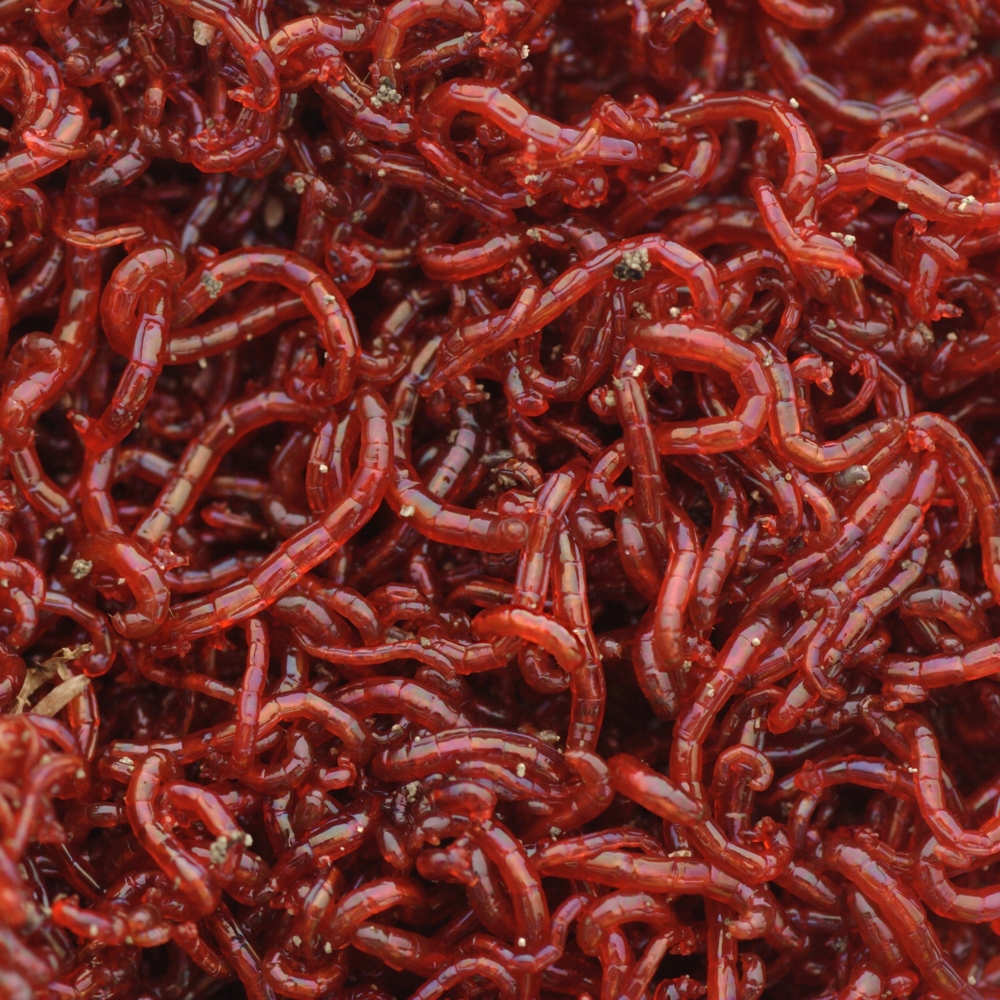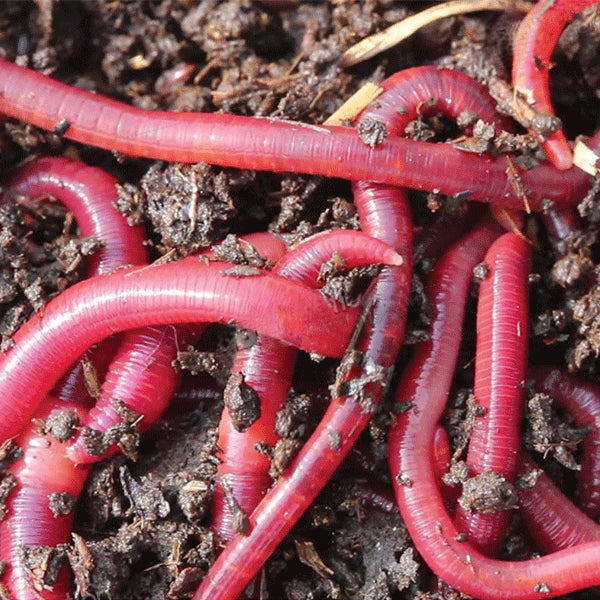Composting-optimized red worms: How they improve soil
Composting-optimized red worms: How they improve soil
Blog Article
The Role of Red Wigglers in Lasting Gardening
The assimilation of red wigglers right into sustainable gardening techniques provides an engaging approach to boosting soil wellness and reducing natural waste. The implications of making use of red wigglers extend past mere composting; their role in shaping a much more lasting future warrants a deeper exploration of their advantages and functional applications.
Recognizing Red Wigglers
Red wigglers, medically called Eisenia fetida, are a varieties of earthworm renowned for their role in sustainable horticulture and composting practices - red wigglers. These worms grow in decaying raw material, making them specifically reliable in transforming cooking area scraps and backyard waste right into nutrient-rich compost. Unlike standard earthworms, red wigglers have a higher resistance for differing dampness levels and can grow in environments with bountiful natural material
(Lake Hickory Worms,)Classically, red wigglers are smaller than their earthworm equivalents, generally determining in between 3 to 4 inches in length. They possess a reddish-brown pigmentation and have a segmented body framework that assists in their burrowing and feeding tasks. These microorganisms are hermaphroditic, implying each specific possesses both male and women reproductive body organs, which enables effective population growth under optimum conditions.
The habitat preferences of red wigglers include wet, dark settings rich in organic content, such as garden compost containers or worm ranches. Their environmental function prolongs past composting; they are integral in aerating the soil and facilitating vitamins and mineral biking, which inevitably contributes to much healthier garden communities. red wigglers. Understanding the biology and habits of red wigglers is necessary for those looking for to apply effective vermicomposting in sustainable horticulture
Advantages of Vermicomposting
Vermicomposting deals various benefits that improve sustainable horticulture methods and add to ecological health. Among the primary advantages is the change of organic waste into nutrient-rich garden compost, which boosts dirt framework and fertility. The castings created by red wigglers are packed with advantageous bacteria and crucial nutrients, making them a superb natural plant food.
Furthermore, vermicomposting substantially reduces landfill waste. By diverting cooking area scraps and backyard waste from landfills, this practice not only reduces methane exhausts-- a powerful greenhouse gas-- but likewise promotes a round economic situation, where waste is repurposed as a source.
One more benefit is the enhancement of soil oygenation and drainage (red wigglers). The burrowing task of red wigglers develops channels in the dirt, permitting air and water to penetrate more quickly, thus cultivating a healthier root system for plants
In addition, vermicomposting can be done on a tiny scale, making it obtainable for city gardeners and those with minimal area. This approach urges environmental stewardship and understanding, as people end up being a lot more involved with their waste monitoring techniques. Eventually, vermicomposting stands for a lasting, effective, and environment-friendly approach to horticulture that benefits both plants and the world.
Just How to Beginning Vermicomposting
Starting your very own vermicomposting system can be a rewarding venture that boosts your sustainable horticulture practices. To begin, select an appropriate container, such as a plastic container or wood box, with good drainage and air flow. The size will depend on the volume of kitchen area scraps you create; a bin of 10-14 gallons typically is sufficient for a home.
Following, prepare the bed linens material. Shredded paper, cardboard, and coconut coir are superb options, giving a comfortable environment for the red wigglers. Go for a bedding deepness of concerning 4-6 inches, which should be damp but not soaked.
As soon as the bedding is established, introduce your worms. Red wigglers (Eisenia fetida) are the most suitable for composting. Start with approximately one pound of worms for every single 2-3 pounds of kitchen area scraps weekly.
Begin including kitchen area waste, preventing meat, dairy, and oily foods, as these can attract parasites and develop smells. Regularly keep an eye on the container's wetness levels and temperature level, guaranteeing it stays within the optimal array for worm task. With these preliminary actions, you'll be well on your way to producing nutrient-rich garden compost for your yard.
Keeping a Healthy Worm Container
A thriving worm container requires constant treatment and interest to keep an ideal setting for the red wigglers. Key elements to keep an eye on consist of dampness degrees, temperature, and food supply. Preserving a moisture degree similar to a wrung-out sponge is crucial; as well much water can cause anaerobic problems, while inadequate can dehydrate the worms.
Temperature is additionally critical, as red wigglers prosper in a variety of 55 to 77 degrees Fahrenheit. Severe temperature levels can stress the worms, possibly causing mortality. As a result, positioning the bin in a climate-controlled area or using insulating materials can assist control temperature level fluctuations.

Finally, aeration is vital. Regularly transforming the bed linens and using a fork or shovel can prevent compaction and advertise air flow, making sure a healthy, successful environment for the red wigglers. By sticking to these methods, garden enthusiasts can preserve a productive worm bin that supports lasting horticulture initiatives.
Effect On Soil Health And Wellness
Enhancing dirt wellness with the use of red wigglers is a fundamental aspect of sustainable gardening. These worms, recognized medically as Eisenia fetida, play a crucial function in enhancing dirt framework and fertility. By consuming raw material, red wigglers break down complicated materials right into simpler compounds, a process called vermicomposting. Completion item, worm castings, is abundant in vital nutrients, including nitrogen, phosphorus, and potassium, which are important for plant growth.

(red wiggler composting worms)Researches have actually revealed that dirts improved with worm castings exhibit enhanced microbial activity look at this web-site and boosted fertility, causing greater plant yields. By integrating red wigglers into gardening techniques, garden enthusiasts not only enhance their dirt yet additionally add to a more sustainable farming system, stressing the interconnectedness of soil wellness and environmental stewardship.

Final Thought
Finally, red wigglers dramatically add to lasting gardening with their effective vermicomposting practices. Their capacity to transform natural waste right into nutrient-rich garden compost boosts dirt fertility and supports a varied microbial ecological community. Their burrowing task boosts soil oygenation and water retention, profiting plant health. By promoting waste reduction and promoting a circular economy, red wigglers become crucial parts in eco-friendly horticulture campaigns, underscoring their vital duty in ecological sustainability.
Report this page